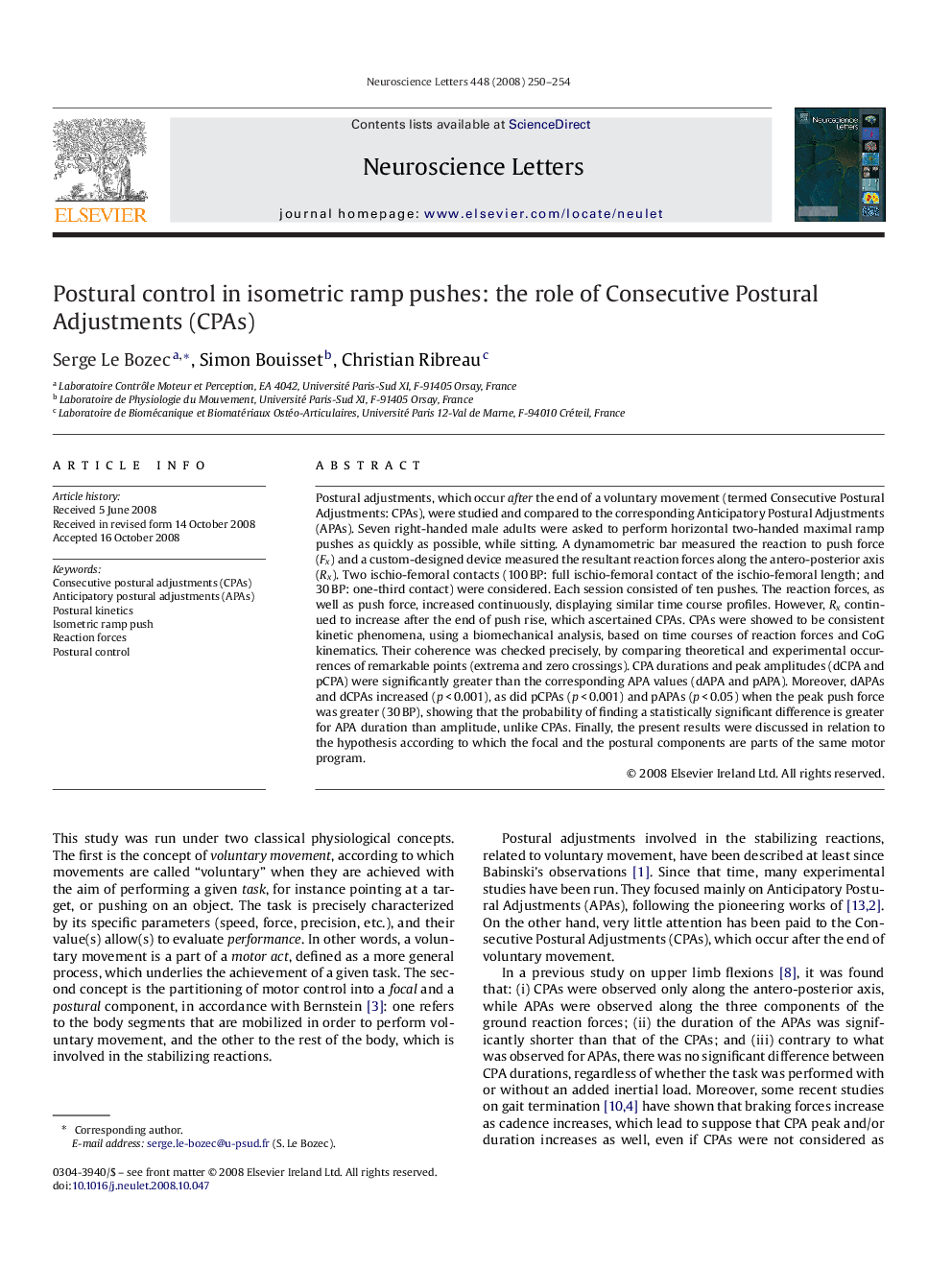| Article ID | Journal | Published Year | Pages | File Type |
|---|---|---|---|---|
| 4347580 | Neuroscience Letters | 2008 | 5 Pages |
Postural adjustments, which occur after the end of a voluntary movement (termed Consecutive Postural Adjustments: CPAs), were studied and compared to the corresponding Anticipatory Postural Adjustments (APAs). Seven right-handed male adults were asked to perform horizontal two-handed maximal ramp pushes as quickly as possible, while sitting. A dynamometric bar measured the reaction to push force (Fx) and a custom-designed device measured the resultant reaction forces along the antero-posterior axis (Rx). Two ischio-femoral contacts (100 BP: full ischio-femoral contact of the ischio-femoral length; and 30 BP: one-third contact) were considered. Each session consisted of ten pushes. The reaction forces, as well as push force, increased continuously, displaying similar time course profiles. However, Rx continued to increase after the end of push rise, which ascertained CPAs. CPAs were showed to be consistent kinetic phenomena, using a biomechanical analysis, based on time courses of reaction forces and CoG kinematics. Their coherence was checked precisely, by comparing theoretical and experimental occurrences of remarkable points (extrema and zero crossings). CPA durations and peak amplitudes (dCPA and pCPA) were significantly greater than the corresponding APA values (dAPA and pAPA). Moreover, dAPAs and dCPAs increased (p < 0.001), as did pCPAs (p < 0.001) and pAPAs (p < 0.05) when the peak push force was greater (30 BP), showing that the probability of finding a statistically significant difference is greater for APA duration than amplitude, unlike CPAs. Finally, the present results were discussed in relation to the hypothesis according to which the focal and the postural components are parts of the same motor program.
